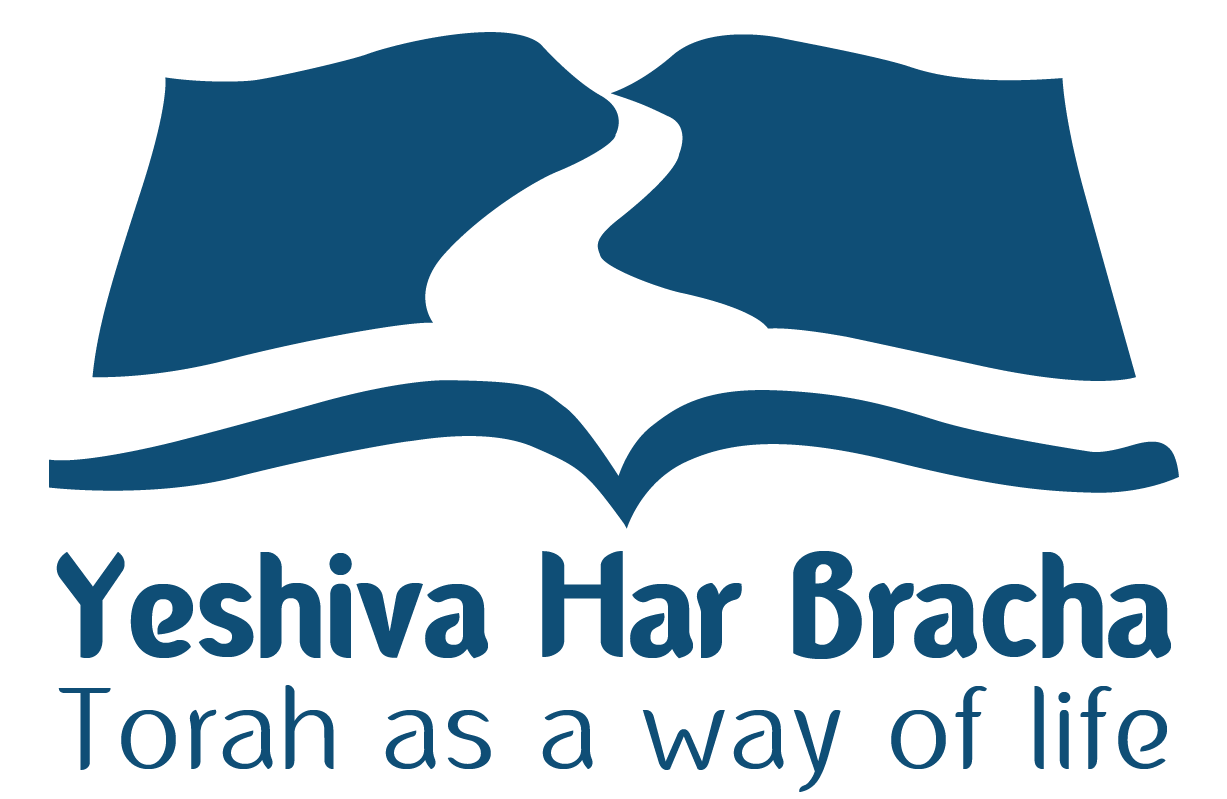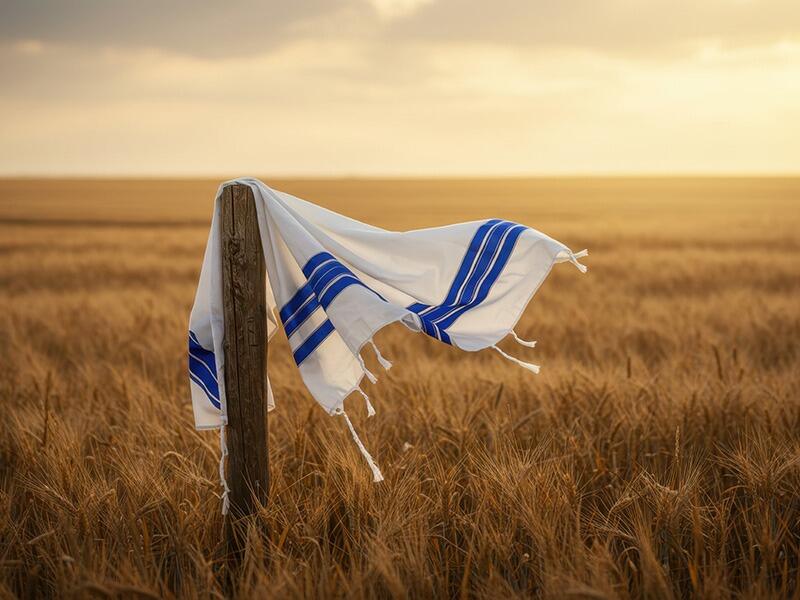A state inquiry committee to be appointed by the Supreme Court will not help at all ● We must conduct a deep soul-searching ● Our war for the Land and the revival of our people includes numerous systems ● All the systems need repair ● There are several general corrections, each of which breaks down into thousands of details ● The tallit expresses the material world in its four corners, in which immense forces are latent ● The threads of the tzitzit hint at the commandments of the Torah, which guide us how to bring into action all the forces latent in man and in the world
The hope was to decisively defeat Hamas; this is the meaning of total victory. Unfortunately, this did not happen. Thanks to the dedication of our soldiers, we inflicted damage on our enemies, but lacking a plan for victory, we did not win. Our situation is still dangerous; our enemies have learned that they can strike us and continue to exist, and they are scheming the next campaign. They are patient and will continue planning the next campaign. This is the religious stance characterizing Islam from its inception. When we return to routine and tire, they will return to attack. Iran was struck, but its aspiration to destroy us remains intact. Thanks to the ground forces and the Mossad, who risked their lives defending the people and the Land, our deterrence was partially restored, but when dealing with ideologically driven enemies possessed with a foreign creed, who have anti-Semitic supporters in important world powers, this is not enough.
We must conduct deep soul-searching. A state commission of inquiry appointed by the Supreme Court will not help at all. For the judicial system also needs scrutiny, and it is unacceptable for committee members to investigate themselves. Moreover, we have not heard of any tendency in the judicial system to engage in soul-searching in any field.
Generally, all public systems require improvement and correction; this does not mean they are particularly bad. The challenges before us are great, and the war exposed the shortcomings and weaknesses.
It can be said that since the failure is multi-systemic, it is difficult to find a body that can honestly investigate all the failed systems. It is possible and appropriate to establish committees to examine specific topics, such as: the military’s preparedness for war, including the lack of plans and ammunition; intelligence failures; the General Staff’s performance in planning and managing the war; responsibility of the judicial system, legal advisories, and the High Court of Justice (Bagatz) for undermining deterrence and the military’s ability to prevent enemy buildup; responsibility of legal advisories and Bagatz for failures in managing the war and the fall of soldiers; and examining the correct strategy for dealing with the return of hostages.
Is it Appropriate to Establish a Commission of Inquiry into Government Performance?
Under normal circumstances, such a commission could be helpful. For this, two conditions must exist: first, the committee members must be free of any political bias. Second, the committee’s conclusions must be presented to the government and the public, and in the next elections, the public will take the committee’s conclusions into account when choosing their representatives to the Knesset. If there is suspicion of a criminal offense, the matter will be referred to police investigation as usual.
However, in our reality, the first condition cannot be met. And apparently, the second condition cannot be met either, since many figures in the judicial system have long believed that their role is to intervene in other branches of government, and to a large extent, even to be partners in selecting the Prime Minister, ministers, legal advisors, heads of the defense system, and all senior officials.
In such a situation, if the government deems it appropriate, it will appoint a committee to help improve its functioning. But there is no possibility of appointing a state commission. The people must decide in elections who will be their representatives in the Knesset, and they will establish the government.
The Correction is Composed of Countless Details
At first glance, it seems there is one core problem, whose solution will fix everything. The question is, what is it—security perception, enemy recognition, foreign policy, the judicial system, education, or the world of Torah? But on second thought, our war for the Land and the revival of our people involves numerous systems. In every system, there are successful components and components with failures, and there is no one foundation that if fixed, everything will be fixed. All systems need correction, and there are several general corrections, each detailing thousands of specifics. It is important to know which principles need correction, and with God’s help, we will address this in future articles. Meanwhile, it is worth knowing these are several principles detailing all areas of life, and each of us is required to work, as best as possible, to correct the areas where he has influence. This may be discouraging, but in truth, it is encouraging, because it gives many people a chance to participate in hastening redemption.
This idea is somewhat hinted at in the mitzvah of tzitzit.
The Meaning of the Mitzvah of Tzitzit—the Tallit and the Tzitzit
The square tallit expresses man and the world, in which many forces are hidden, and as long as they do not come into action, man and the world remain like an unshaped mass, without content, or meaning. Therefore, the tallit that surrounds a person, hints at the ‘ohr makif’ (surrounding light), which is above and beyond the light revealed in the world, and thus it is revealed in the light encompassing the world, as well as in the forces hidden and concealed within the world. The tzitzit threads emerging from the garment express the actualization of the forces ‘ohr p’nimi‘ (inner light). “Tzitzit” (fringes) comes from “tzitz ha’sadeh“—the plants growing and peeking from the field, actualize the forces hidden in the field. However, actualizing these forces is a complex and dangerous challenge.
To further explain: the tallit represents the material world with its four corners, in which tremendous powers are hidden. In every atom, immense energy is enclosed. But the question is how to use all these powers without being harmed. Likewise, in man, who is a small world, there are immense desires and talents which sometimes turn into destructive passions for man, and the world. The question is how to use all these tremendous powers hidden in the world and man in a beneficial and non-harmful way. The solution is hinted at in the mitzvah of tzitzit, whose threads hint at the commandments of the Torah, which guide us how to actualize all the powers hidden in man and the world, in an orderly and graded manner, in all areas of life. For example, the commandments guide us how to correctly reveal the love hidden in a person’s heart within marriage, family, and society; how to direct human desire for wealth in a proper way; how to express national aspirations for the great vision of Tikkun Olam (repairing the world) (according to the Maharal in Netiv HaAvodah 15).
Four Corners
Only a garment with four corners requires tzitzit, because only such a garment expresses the world in all its aspects (Or HaChaim Bamidbar 15:39). That is, only through connection to the entire reality created by God, can one continue the 613 commandments of the Torah, which pave the corrected path to actualize the forces hidden in all reality, in a way that adds blessing to man and the world—this is the principle of “Derech Eretz Kadma LaTorah” (Proper conduct precedes Torah).
From General to Full Detail
The tzitzit must be attached to the corner, which is the edge of the garment. Even the tzitzit itself is initially wrapped as a single thread, expressing the general ideas in Torah guidance, and from the single thread, it is divided into eight threads. That is, from the general ideas, Torah guidance gradually details the commandments and laws. In this way, the tallit and tzitzit express the graduated process of actualizing the forces.
Tzitzit on a Shirt, or Suit with a Collar
Q: Why is one not obligated to wear tzitzit on a shirt, or suit with a folded collar? The collar creates two corners, and below are two more corners, so they have four corners?
A: A garment that requires tzitzit is one that has two corners in front and two in back, and the angles of the collar, which are in front, are not considered garment corners (Rema Orach Chaim 10:12).
It can be explained further that the garment’s corners hang down, so the collar angles, which stand up for decoration, are not considered garment corners. Although some hold that one should round off one of the corners (Magen Avraham 10:13; Mishnah Berurah 10:36), the Jewish custom for generations has been lenient without question.
Frock Coat
Questions were raised about the frock coat, common among rabbis and judges, which has a large slit in the back so that most of it is open, meaning it has two corners in front and two in back. Some say that since it is a coat and not like a tallit with a half-open shape, it is exempt from tzitzit (Aruch HaShulchan 10:16-19). Others say it is obligated in tzitzit, but if one rounds off one of the corners, it is exempt (see Mishnah Berurah 10:36). The custom is to round one of the back corners.
Blanket with Four Corners that One Sleeps in During the Day
Q: Why is a blanket exempt from tzitzit if it has four corners and one sleeps in it during the day, when tzitzit is required?
A: A garment is intended to cover the person while walking at home and outside. Therefore, blankets, even if one sleeps in them during the day, are exempt from tzitzit because they are not garments (Mordechai; Shulchan Aruch Orach Chaim 18:2). However, some were concerned that blankets used during the day might require tzitzit, so they were careful to round one of the corners, especially if they were wool (Magen Avraham 18:3; Shulchan Aruch HaRav 5). However, the custom is not to be stringent in this, since halachically, a blanket is not a garment and is exempt (Mor Uketzia, Eshel Avraham Botoshatz, Aruch HaShulchan 18:8, Brit Kehuna Orach Chaim 140:14).
Also, a blanket sometimes wrapped around one on a sofa (“kervolit“) is exempt from tzitzit because it is intended as a blanket, not a garment.
Is a Garment Made of Synthetic Threads Obligated in Tzitzit?
A leather garment is exempt from tzitzit because it is not made by threads like regular garments, but from one piece (Shulchan Aruch 10:4; Levush, Shulchan Aruch HaRav). Similarly, a nylon or plastic sheet made into a kind of garment for workers’ protection is exempt from tzitzit because it is not made from threads.
Following this, some say that even garments made from synthetic threads are exempt from tzitzit (Igrot Moshe Orach Chaim 2:1). However, according to most later authorities, they are obligated because there is no difference between garments made of natural threads and those made of synthetic threads; any garment made of threads requires tzitzit (Har Tzvi Orach Chaim 1:9). Because of doubt, some ruled not to bless on tzitzit on such garments (Tzitz Eliezer 12:3).
Over the years, synthetic thread production has greatly improved. Previously, they were poor quality and used only because of low price for cheap clothes that did not warm well in winter and caused sweating in summer. Now, the quality of synthetic threads has improved remarkably, and today quality garments are made from them, sometimes considered better than garments made from natural threads. Therefore, one should bless on a tallit made of synthetic threads (such as ‘DryFit‘).
This article appears in the ‘Besheva’ newspaper and was translated from Hebrew.








